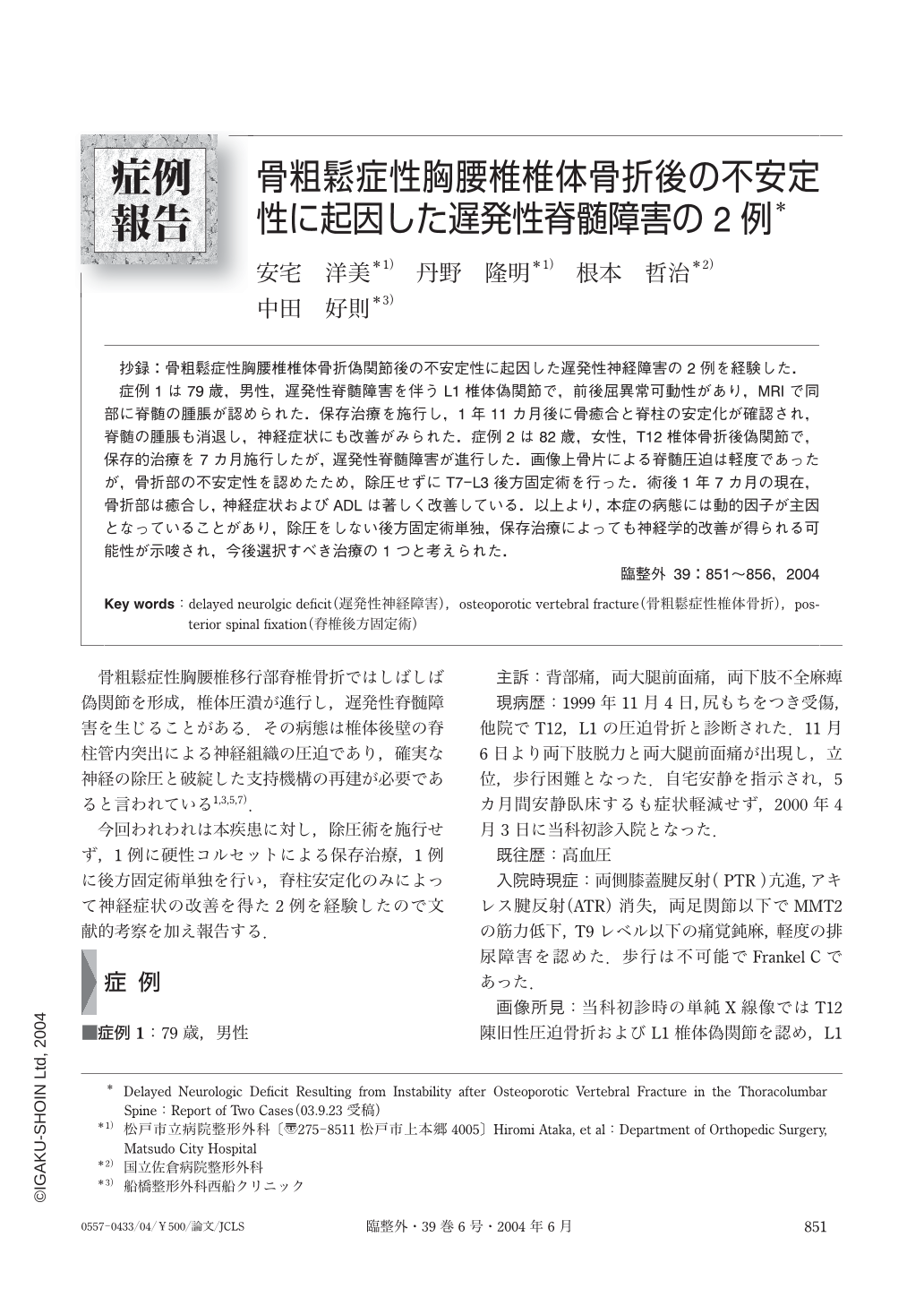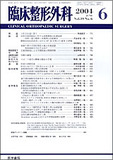Japanese
English
- 有料閲覧
- Abstract 文献概要
- 1ページ目 Look Inside
抄録:骨粗鬆症性胸腰椎椎体骨折偽関節後の不安定性に起因した遅発性神経障害の2例を経験した.
症例1は79歳,男性,遅発性脊髄障害を伴うL1椎体偽関節で,前後屈異常可動性があり,MRIで同部に脊髄の腫脹が認められた.保存治療を施行し,1年11カ月後に骨癒合と脊柱の安定化が確認され,脊髄の腫脹も消退し,神経症状にも改善がみられた.症例2は82歳,女性,T12椎体骨折後偽関節で,保存的治療を7カ月施行したが,遅発性脊髄障害が進行した.画像上骨片による脊髄圧迫は軽度であったが,骨折部の不安定性を認めたため,除圧せずにT7-L3後方固定術を行った.術後1年7カ月の現在,骨折部は癒合し,神経症状およびADLは著しく改善している.以上より,本症の病態には動的因子が主因となっていることがあり,除圧をしない後方固定術単独,保存治療によっても神経学的改善が得られる可能性が示唆され,今後選択すべき治療の1つと考えられた.
Two cases of delayed neurologic deficit resulting from instability after osteoporotic vertebral fracture are reported.
Case 1. A 79-year-old man developed spinal cord disorder secondary to vertebral instability as a result of pseudarthrosis of the L1 vertebral body. MRI showed spinal cord swelling at the same level. He has been treated conservatively for 1 year and 11 months, and bone union has been achieved. Spinal cord swelling is no longer detectable on the MRI images, and the neurological complication has improved.
Case 2. An 82-year-old woman with T12 vertebral body collapse experienced the gradual onset of a neurologic deficit despite conservative treatment for 7 months. The MRI and CT images showed only slight cord compression by the bone fragment in the spinal canal at the T12 level. Flexion and extension radiographs showed abnormal movement at T12. Posterior spinal fixation from T7 to L3 without decompression was performed with instrumentation by a combined method using pedicle screw, hook, and sublaminar wiring. Bone union of T12 was achieved, and great neurological improvement was observed at the most recent follow-up, 1 year and 7 months after the operation.
These 2 cases suggested that delayed neurological deficit might be caused by instability of the vertebral column at the pseudoarthrosis site and not by mechanical compression of the spinal cord. Therefore stabilization of the spine both by conservative treatment and posterior fixation even without decompression may improve the neurologic deficit, and this appears to be an effective way of treating delayed neurologic deficis secondary to osteoporotic vertebral fractures.

Copyright © 2004, Igaku-Shoin Ltd. All rights reserved.


